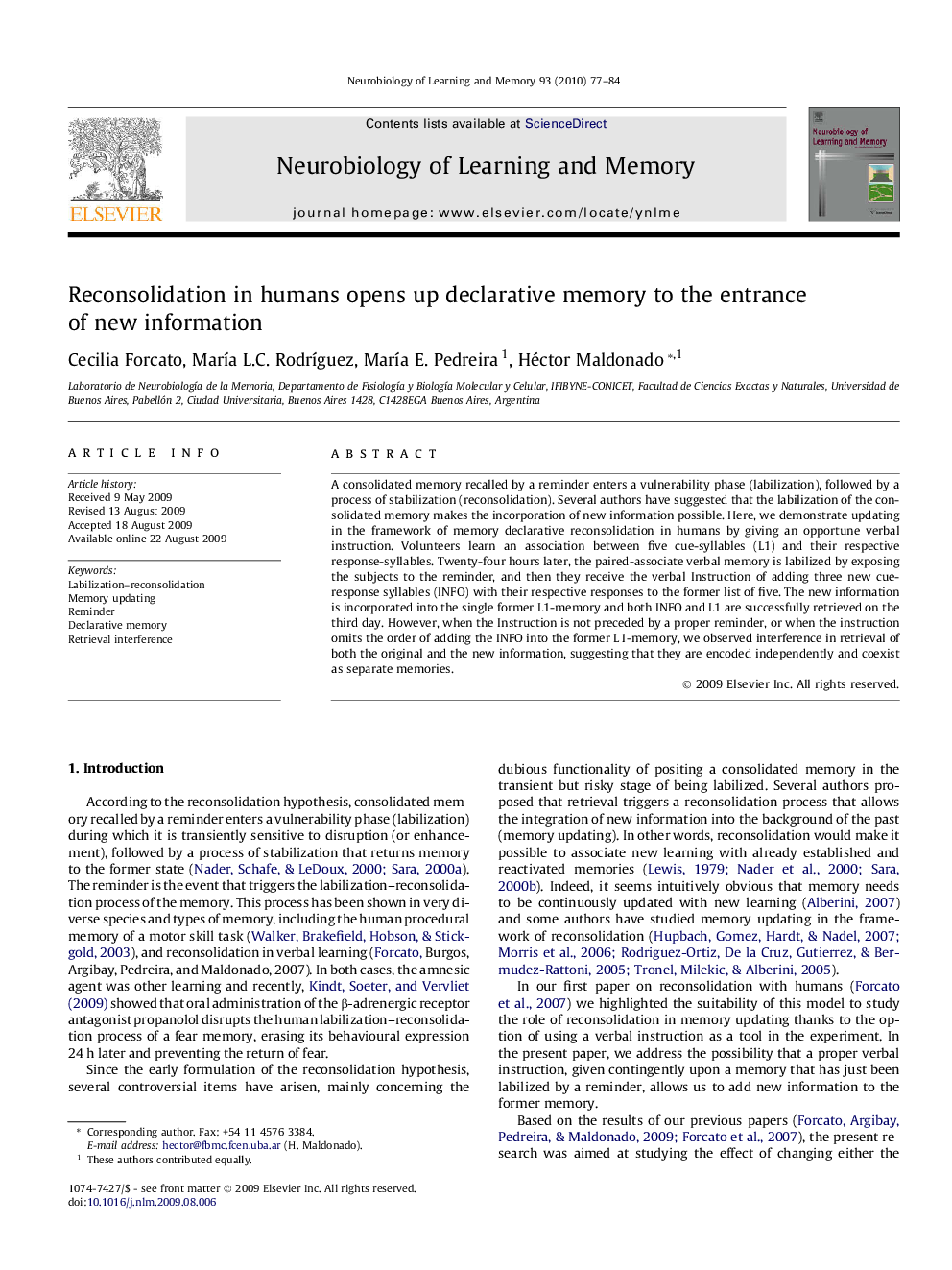| Article ID | Journal | Published Year | Pages | File Type |
|---|---|---|---|---|
| 937049 | Neurobiology of Learning and Memory | 2010 | 8 Pages |
A consolidated memory recalled by a reminder enters a vulnerability phase (labilization), followed by a process of stabilization (reconsolidation). Several authors have suggested that the labilization of the consolidated memory makes the incorporation of new information possible. Here, we demonstrate updating in the framework of memory declarative reconsolidation in humans by giving an opportune verbal instruction. Volunteers learn an association between five cue-syllables (L1) and their respective response-syllables. Twenty-four hours later, the paired-associate verbal memory is labilized by exposing the subjects to the reminder, and then they receive the verbal Instruction of adding three new cue-response syllables (INFO) with their respective responses to the former list of five. The new information is incorporated into the single former L1-memory and both INFO and L1 are successfully retrieved on the third day. However, when the Instruction is not preceded by a proper reminder, or when the instruction omits the order of adding the INFO into the former L1-memory, we observed interference in retrieval of both the original and the new information, suggesting that they are encoded independently and coexist as separate memories.
